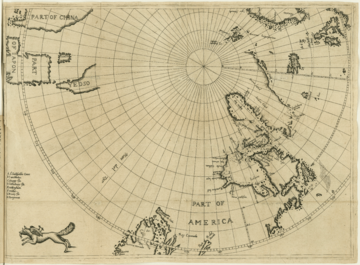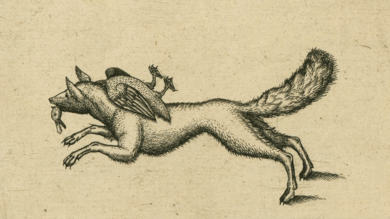Luke Foxe facts for kids
Quick facts for kids
Luke Foxe
|
|
|---|---|
| Born | 20 October 1586 |
| Died | c. 15 July 1635 |
| Occupation | sea captain, explorer |
| Signature | |
 |
|
Luke Foxe (sometimes spelled Fox) was an English explorer. He was born in Kingston-upon-Hull, England, on October 20, 1586. He became a sea captain and spent his life searching for the Northwest Passage. This was a sea route across North America that explorers hoped would lead to Asia.
In 1631, Foxe sailed through much of the western Hudson Bay. After his journey, he believed that no such passage existed there. Today, places like Foxe Basin, Foxe Channel, and Foxe Peninsula are named after him. He died around July 15, 1635, in Whitby, England.
Contents
Early Life and Sailing Skills
Luke Foxe was the son of Richard Fox, who was also a seaman. Luke was born in Hull on October 20, 1586. From a young age, he learned about sailing. He traveled south to countries like France and Spain. He also sailed north to places like Denmark and Norway. These trips helped him become a skilled sailor.
In 1606, when he was 20, he wanted to join a voyage to Greenland. However, he was told he was too young to be a mate on the ship.
The Great Arctic Journey (1631)
Luke Foxe became an important Arctic explorer, following in the footsteps of others like Robert Bylot and William Baffin. In 1629, he asked the king for money to help him find the Northwest Passage. He believed it was possible to find this route.
Finally, in 1631, Foxe set sail from London in a ship called the Charles. It had a crew of twenty men and two boys. They carried enough supplies for eighteen months. Another explorer, Captain Thomas James, also left Bristol around the same time on a similar mission.

Foxe left London on April 30, 1631. He reached the Orkney Islands by May 19. On June 20, he saw land on the north side of Frobisher Bay. Two days later, he spotted Cape Chidley. On June 23, he passed Resolution Island. There, his crew saw smoke from Captain James's campfire. James had stopped there to fix his ship.
From June 23 to July 11, Foxe sailed along the north shore of Hudson Strait. He then reached an area between Mill and Salisbury Islands.

After this, Foxe sailed south of Coats Island. On July 27, he reached the furthest point of an earlier voyage by Captain Button on Southampton Island. Here, he found signs that native people had been there long ago.
Foxe then turned south along the west coast of Hudson Bay. On August 27, he entered the Nelson River. He found a broken wooden board left by Captain Button and replaced it with a new one. On August 30, he met his fellow explorer, Captain James. They shared a meal and spent seventeen hours together.
Foxe continued his journey, reaching Cape Henrietta Maria at the top of James Bay. On September 3, he turned his ship north. Five days later, he reached Cape Pembroke on Coats Island. From September 15 to 20, Foxe explored the channel now named after him, on the west side of what is now Baffin Land.
On September 22, he began his journey home. He sailed among the many islands and sounds off the north shore of Hudson's Strait. He passed Resolution Island again and then Cape Chidley on October 5. Foxe chose to sail south-east to the English Channel for his return. This route was safer than the shorter one through the North Sea. On October 31, he arrived back in England. Amazingly, all his crew members were safe and well.
Later Years
After his long voyage, Luke Foxe faced some money problems. He became a younger member of Trinity House, an organization for sailors. He passed away in Whitby in July 1635.
His Book
Luke Foxe is well-known for the book he wrote about his journey. It was called North-west Fox, or Fox from the Northwest Passage. The book was published in London in 1635. It included details from his own voyage and summaries of other explorers' trips. The book also came with a large, folded map of the Arctic regions.
What He Left Behind (Legacy)
During his travels, Luke Foxe named 27 different places. Eight of these names are still used today. For example, he named Roes Welcome Sound after his friend and supporter, Sir Thomas Roe. He also named Cape Dorset on September 24, 1631, after Edward Sackville, 4th Earl of Dorset.
In the 20th century, this cape gave its name to the Dorset culture. This was an ancient group of people who lived in the Arctic parts of North America before the Inuit people. Their remains were first found at Cape Dorset. So, in a way, Captain Foxe's naming of the cape also helped name this important historical culture.
See also



